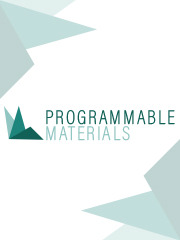Meet Professor Peter Fratzl, Associate Editor of Programmable Materials
Want to find about more about Programmable Materials? Here’s a Q&A with Professor Peter Fratzl who shares his experience working in the field and what you can expect from the new open access journal.
What first attracted you to the field of programmable materials?
Natural materials rely to a larger extent on structure than on composition to modulate their properties that are required for function. For example, claws, hairs, tendons or fangs of a spider are all based on a chitin fiber composite but have radically different functions that are “programmed” by the organism primarily through internal fiber architecture.
What are you currently working on that you’d like to tell us about?
We try to understand fiber architectures in composite materials as a “programming language” to tune its mechanical properties.
What do you think the journal Programmable Materials will bring to the field?
The field of programmable materials is highly interdisciplinary and the journal is meant to bring together the relevant communities from materials science, mechanical engineering, nano- and microfabrication, biology, architected materials and even artificial intelligence.
What are some of the challenges facing the field today?
The fabrication of programmable materials is a current challenge, but clever practical uses of such materials also need to be devised. Programmable materials challenge the traditional concept of a materials with well-defined properties. Indeed, due to the programming, the properties and the behavior of such material system depend on history (namely the preceding programming steps). This is a paradigm shift in materials engineering.
In which areas of the programmable materials field do you expect to see growth in the next five to ten years?
One of the big challenges ahead of us will be the distribution of programming steps between the materials system itself and digital processors interacting with it. This will allow a better balance between energy efficiency and flexibility and devices and machines. One can foresee numerous applications in various fields from robotics to medical engineering.
Why should authors publish in Programmable Materials?
The journal will provide a unique interdisciplinary platform for papers on conception, fabrication and use of programmable materials.
Stay up-to-date with the latest content: sign up for alerts here.






